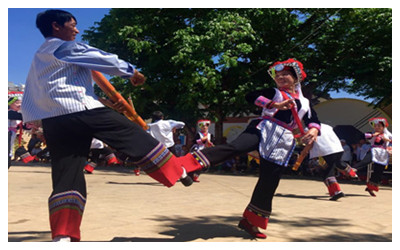Skype: neodalle-travel
Tel: +86 135 7447 2266
E-mail: sales@visitaroundchina.com

Life Style of Hani Minority
Religion
 Hani People are convinced that everything has soul, so they worship many gods and their ancestors. In the 1920s, Christianity and Buddhism had spread to them, but with little influence. The person who is designated to hold the religious activities is hereditary and doctors cure patients with witchcraft and herbal medicine.
Hani People are convinced that everything has soul, so they worship many gods and their ancestors. In the 1920s, Christianity and Buddhism had spread to them, but with little influence. The person who is designated to hold the religious activities is hereditary and doctors cure patients with witchcraft and herbal medicine.
Language
Hani language belongs to the Yi branch, Tibetan-Burman group of the Sino-Tibetan phylum. The language has no characters of its own, so in 1957 the Chinese government created a set of spelling characters based on Latin.
Economy
Before the foundation of modern China in 1949, the productivity was low but today, they have terraces and the area enjoys the reputation of 'the land of milk and honey'. This is also home to the famous 'Dian Lu' and 'Pu'er' teas.
Clothes
They like the navy blue clothes they weave and dye themselves. Men wear a front opening coat and wrap their heads with black or white cloth; while women's clothes have a right forepart without a collar. Silver decorations are popular among them to hang.
Custom
It is interesting to mention the marriage custom: if a boy and a girl fall in love with each other, their parents will walk for a stretch. If on the path, they meet no wild animals like rabbits or wolf, this means the success of engagement.
Festivals of Hani Minority
Calculated according to the Hani calendar, the first day of the tenth month is the festival of most pomp. It is customary for the people to sing, dance and drink, even overnight, and to make sacrifice to their ancestors.
Ku-Zha-Zha is celebrated for three days in the sixth lunar month. On the first day, men go to the public place to kill an ox and share with all the people in the village; the second day women get up early and clean their houses, then prepare sumptuous dinners to worship ancestors; on the third day all the people wear their flowery clothes and hold many entertainments like swinging, and singing.
Besides the above they also celebrate Chinese New Year, Dragon Boat Festival, and Mid-Autumn Day.
 Ask Questions ?
Ask Questions ?